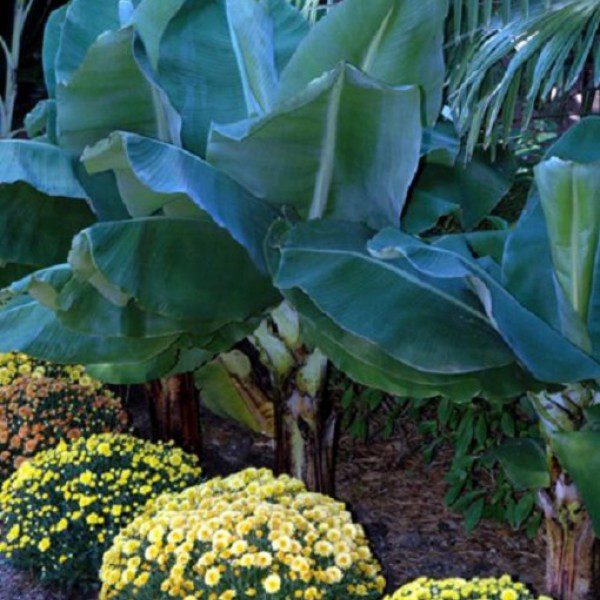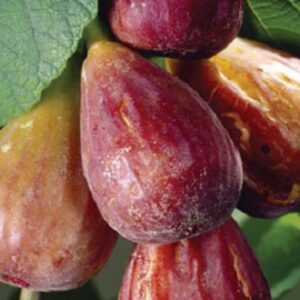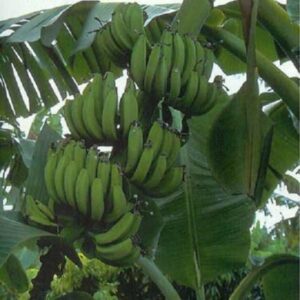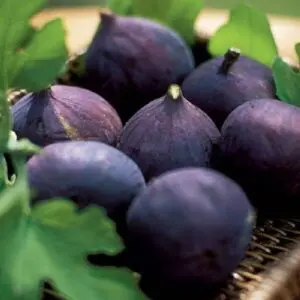Banana Plant Little Prince Musa Dwarf Banana Tree 4″ pot
$9.99 sales tax
Due to the compactness of Musa Little Prince, it is ideally suited as both a houseplant and can also be used as a tropical accent in the garden and in a summer container. Zones 8-10.
Description
Banana Plant Little Prince “4” deep pots
Banana plant Little Prince for sale. Plants between 4″- 24″ tall “They grow fast!!” Each plant is grown from tissue cultures to be a disease free exact replica of the mother plant. Due to the compactness of Musa Little Prince, it is ideally suited as both a houseplant and can also be used as a tropical accent in the garden and in a summer container. Zones 8-10.
Little Prince is an extremely dwarf banana, selected for its compact size and thick foliage. The maximum height for this variety is 24 inches, which makes Little Prince the shortest banana available on the market.
The thick green foliage also allows for improved resistance to leaf shred caused by winds a common problem for all bananas. A true indoor /outdoor plant: suggest that the gardener brings the plant into the home or conservatory for the winter. Prefers ample moisture, grow in fertile soil & full sun. Ships to the continental United States only.
Little Prince Banana care and instructions:
Watch this video for detailed growing instructions
Banana Plant Little Prince Care
Fertilizer
Fertilize bananas using any type of high nitrogen organic fertilizer. Bananas are heavy feeders so we suggest that you fertilize every couple of months After your initial watering.
Light and Temperature Requirements
Grow bananas in brightlight. 12 hours of bright light are ideal for most varieties. bananas prefer Constant WARMTH this is very important .
The ideal night temperature is be 67 F. The day temperatures should be in the 80s.
If you are in a more northern climate you may bring them during the winter. rhizome / rootball and all, remove the leaves and store the plant, dry, in a heated area over winter.
To assure survival, it is easier to dig small suckers, severed very close to the parent rhizome, and pot them for overwintering indoors. Spacing should be at around 4′ this will produce a stand or patch.
Planting
We recommend planting Bananas in patches or groves, placing them together in a stand. The shade from a stand of bananas is generally cooler than regular shade, a well placed hammock will do nicely on a hot summer day.
After fruiting, the mother plant which bore should be cut off near ground level, as it can never produce again. If cut into three or four pieces with each piece then being split lengthwise the old trunk will quickly decompose. Use the remains in a mulch bed or compost heap.
After a major cold period in which there is no doubt that bananas were killed to the ground, cut the plants off at ground level within a couple of weeks of the freeze. Dead bananas are not very attractive and they are much easier to cut off before decomposition starts. banana leaves can be removed after they break and hang down along the trunk.
Most bananas will produce the flower bud within 10 to 15 months of emergence as a new sucker, depending mostly on variety and extent of cool/cold weather. Most production north of the lower Rio Grande Valley occurs in the spring and summer following a particularly mild winter.
Banana Propagation
Bananas can be propagated from pups which are the off shoots from mature plants. These off shoots will form new Rysomes thus creating a new plant. Commonly referred to as a pseudo stem or trunk, bananas possess a trunk-like feature composed of fiber ridden leaves.
Pests and Diseases
When it comes to Pests and Diseases Bananas have few troublesome pests or diseases outside the tropics. Root rot from cold wet soil is by far the biggest killer of banana plants in our latitudes.
General Information
Broad, long, graceful leaves and rapid growth-commonly reaching full size in just a few weeks-make banana a favorite plant for providing a tropical look to pool and patio areas. The development of bananas following a frost-free winter is a source of both pride and amazement to those unfamiliar with banana culture.
Bananas are a tropical herbaceous plant consisting of an underground corm and a trunk (pseudostem) comprised of concentric layers of leaf sheaths. At 10 to 15 months after the emergence of a new plant. There are thousands of banana varieties and some species reach up to 50 feet in height.
Additionally Banana flowers appear in groups (hands) along the stem. These hands are covered by purplish bracts which roll back and shed as the fruit stem develops. The first hands to appear contain female flowers which will develop into bananas (usually seedless in edible types). The number of hands of female flowers varies from a few to more than 10, after which numerous hands of sterile flowers appear and shed in succession, followed by numerous hands of male flowers which also shed. Generally, a bract rolls up and sheds to expose a new hand of flowers almost daily.
The most common names for bananas are Musa acuminata, Musa balbisiana, banana, plantain, banano, platano, guineo, cambur, English, plantain, horse banana, platano, Musaceae, Cavendish and Musa.
Banana Sap
Banana sap is a more like water than sap but will slightly stain clothes if your not careful. However some find it to be a mild irritant.
Florida Hill Nursery is your internet source for buying rare plants and fruit trees. Our online Plant selection ensures the best selection of internet plants available. Check out our wide selection of other tropical plants, subtropical plants and northern temperate climate plants. Buy 1 plant or tree and receive free shipping on the next three plants or trees using *best way shipping. Our online selection of rain forest tropicals and fruit trees can add a piece of the tropics to your back yard, greenhouse, patio or garden.





